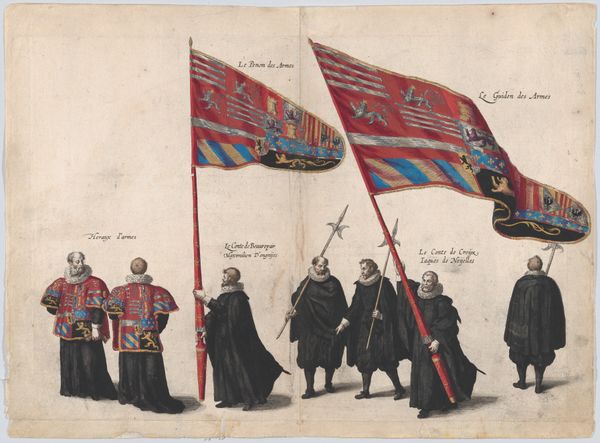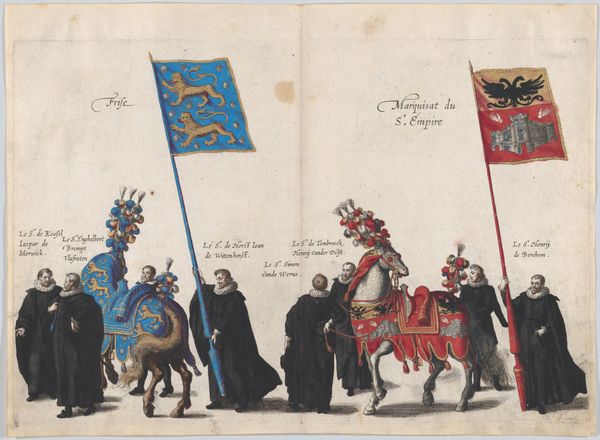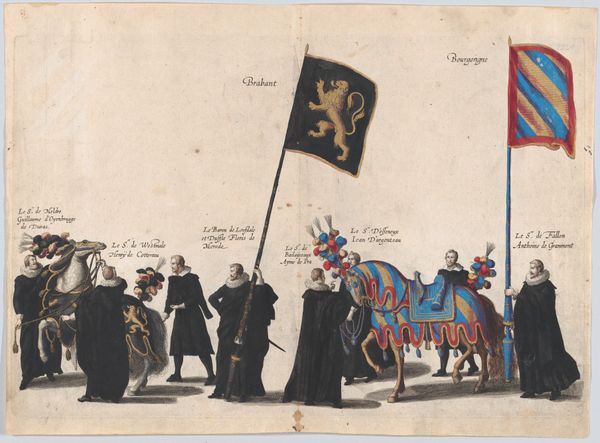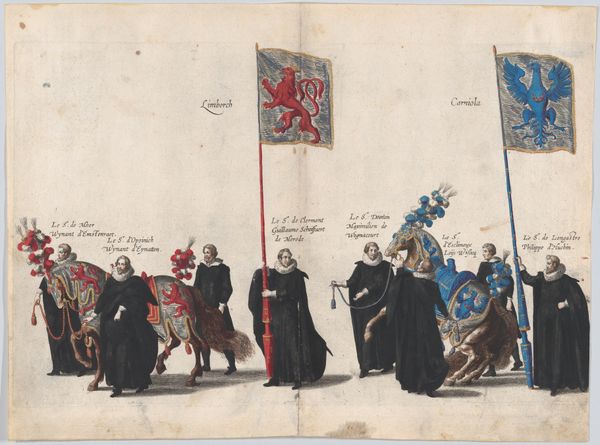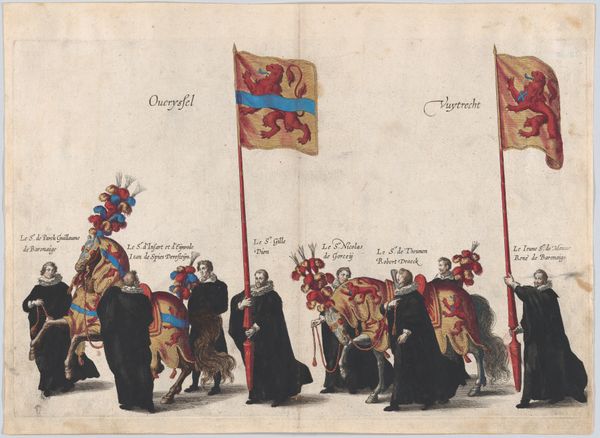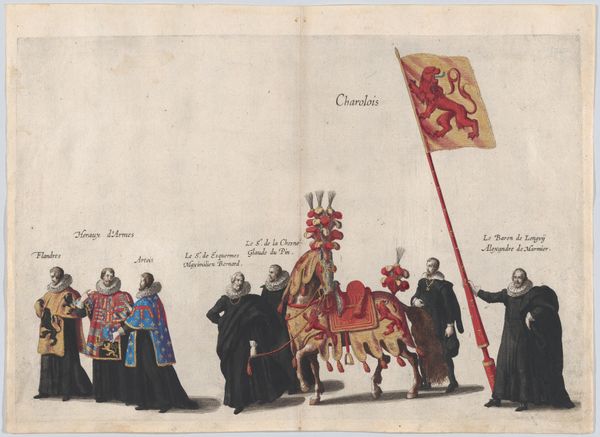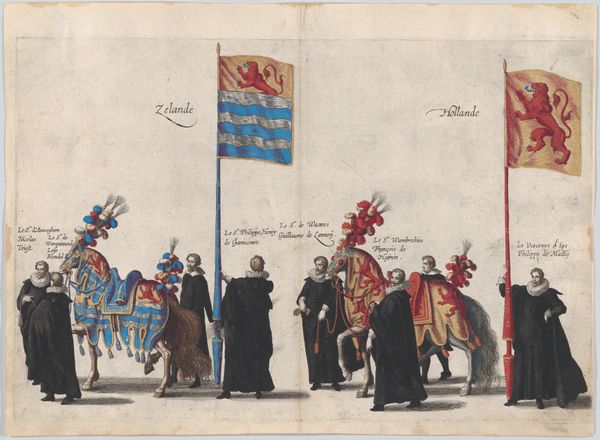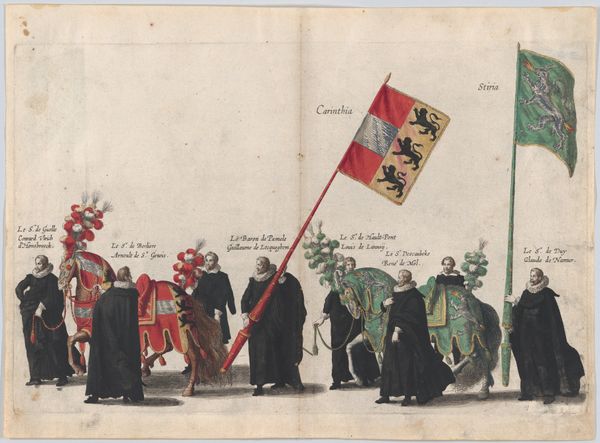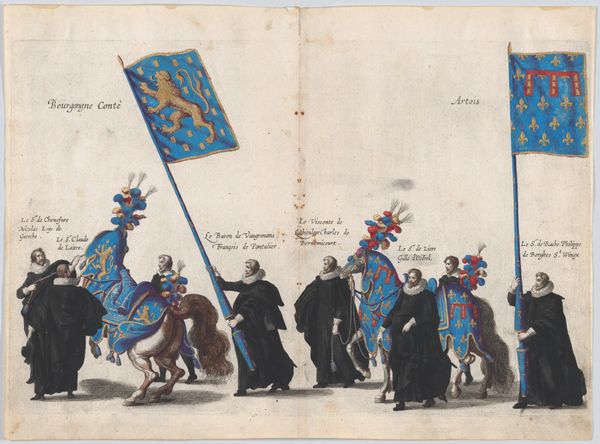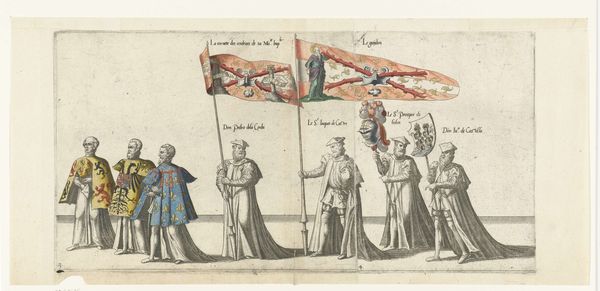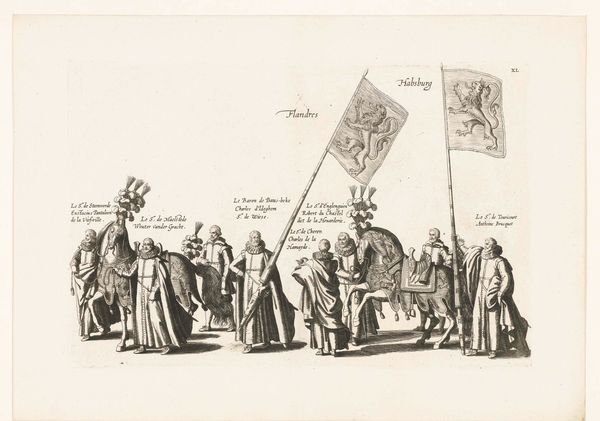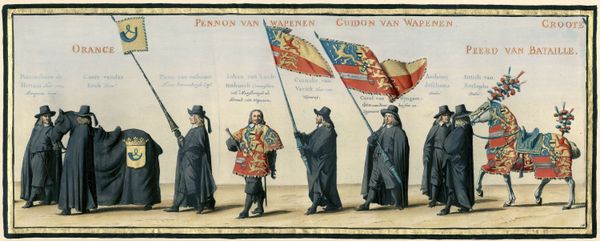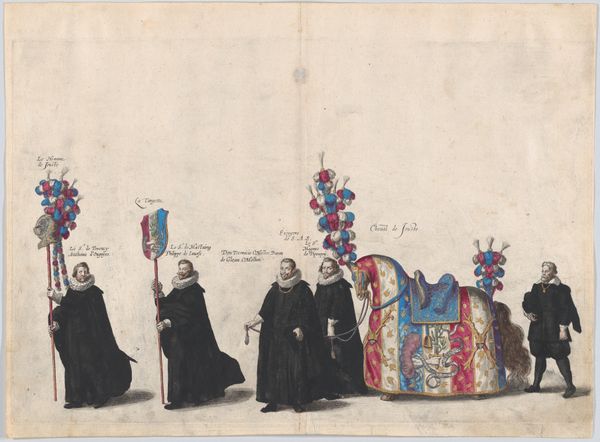
Plate 33: Men with heraldic flags and horses from Mechelen and Salins marching in the funeral procession of Archduke Albert of Austria; from 'Pompa Funebris ... Alberti Pii' 1623
0:00
0:00
drawing, print, engraving
#
portrait
#
drawing
#
baroque
# print
#
group-portraits
#
horse
#
men
#
history-painting
#
engraving
Dimensions: Sheet: 11 3/16 × 15 3/8 in. (28.4 × 39 cm) Plate: 9 3/4 × 14 13/16 in. (24.8 × 37.7 cm)
Copyright: Public Domain
Curator: This is Plate 33 from Cornelis Galle I’s ‘Pompa Funebris ... Alberti Pii’, created in 1623. It's an engraving, housed at the Metropolitan Museum of Art, depicting a funeral procession. Editor: It’s interesting! You see the horses, the flags, the very formal attire of the men... It makes you wonder what's being presented in this procession: what are the flags doing, what do the materials convey about their time? What do you see in this piece? Curator: I see a careful articulation of social rank, achieved through very specific material choices. Notice the black robes – undoubtedly expensive and precisely tailored, a deliberate presentation of solemnity and wealth. And then observe how labor comes into play in the creation of this piece, how it is a Baroque artwork and print which in turn facilitates broader consumption of imagery, how it serves as a carefully constructed object aimed at both commemorating Archduke Albert and solidifying certain societal values linked to lineage, service and region in the Holy Roman Empire at this time, particularly among those from Malines and Salins. How do those visual and material signals create meaning, especially considering the means of production? Editor: So it's not just about commemorating a ruler, but really about demonstrating a very deliberate, even performative construction of power and remembrance through the careful employment of resources available. Curator: Exactly. Consider the sheer labor involved in producing these engravings and distributing them, or those costumes; they would have functioned almost like luxury goods which would then reify a hierarchical social structure, a system being celebrated. And even the choice to portray specific individuals – did their robes represent professional associations such as academics, for example? It also makes me think how many others contributed: from papermakers and metal engravers, to the men in the portraits themselves. How do those individuals and groups challenge how we delineate between artistic skill, handcraft and manufacture? Editor: I see now how much deeper the layers go: this isn’t just a historical record. Curator: Right! By interrogating materials, production processes, and their relationship to historical context, this becomes much more than a record: it reveals a whole system of material relations at play in Baroque society and visual art at this time. Editor: Thank you. That makes me think about historical portraits differently now. Curator: Likewise, reflecting upon this print also challenged me to understand a bit better about this type of material of cultural and symbolic presentation.
Comments
No comments
Be the first to comment and join the conversation on the ultimate creative platform.
